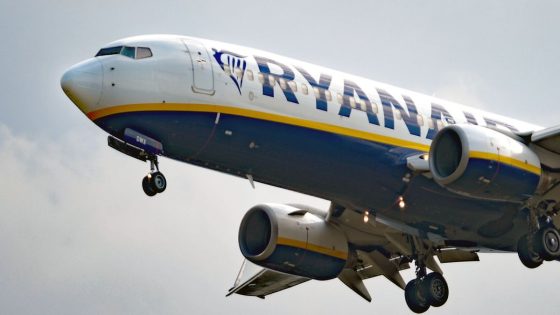A U.S. Marine Corps F-35B stealth fighter has begun wearing some decidedly non-standard markings, the most flamboyant we’ve seen on an operational Joint Strike Fighter so far. The upper fuselage and top surfaces of the wing of the F-35B in question, operated by Marine Fighter Attack Squadron (VMFA) 242 “Bats,” are emblazoned with a stylized motif showing the night-flying mammal of the unit’s logo. The jet has recently been captured by photographers at its base, Marine Corps Air Station Iwakuni in Japan’s Yamaguchi prefecture. According to at least one of those photographers, this particular F-35B, serial 169623, which wears the individual code DT-01, is not known to have flown in 2024 but it made a dramatic reappearance in its new markings this month. DT01、ブレイク4機中3番目だから、遠いです、蓋の内側コウモリ模様消えてる! pic.twitter.com/KaQxZu0rCM— kiyoちゃん (@kG9pkIjAWWhidYX) June 18, 2024 6/18 DT01 Co-shipなんちゃつてカメラは限界 pic.twitter.com/By02VHqFOQ— Seagull (@seagull678) June 18, 2024 2024-6-20 pic.twitter.com/m7LBVcc8jm— Relay PointⅡ (@point_relay) June 20, 2024 2024-6-20 pic.twitter.com/9aDWSCODmZ— Relay PointⅡ (@point_relay) June 20, 2024 2024/06/20VMFA-242 DT 01 pic.twitter.com/rBqHDPGOxS— robinⅡ (@robin1651013061) June 20, 2024 2024-6-18F-35B DT-01 169623 VMFA-242 pic.twitter.com/3p4R7Fn0cY— Relay PointⅡ (@point_relay) June 18, 2024 2024-6-13F-35B DT-01 169623 VMFA-242 COC pic.twitter.com/del5t81hPM— Relay PointⅡ (@point_relay) June 13, 2024 Another version of the same photo from the top of this story, this time without haze filter correction. @kG9pkIjAWWhidYX The photo of the jet at the top of this story, provided by @kG9pkIjAWWhidYX on X, reveals details of the bat logo, including its red eyes. The photographer captured the jet earlier today when it made an overhead approach on Iwakuni’s Runway 20. Previously, on June 13, official U.S. Marine Corps photos of the jet were published, although the bat markings were only seen at a distance, with few details visible. The occasion was the final flight of the commanding officer of VMFA-242, Lt. Col. Alexander Mellman at Iwakuni. F-35B serial 169623 displays the bat insignia during a flight at Marine Corps Air Station Iwakuni, Japan, June 11, 2024. U.S. Marine Corps photo by Cpl. Chloe Johnson Cpl. Chloe Johnson Mellman was conducting his last flight after 20 years of service in the U.S. Marine Corps. Photos show Mellman taxiing out in serial 169623, taking part in the ‘fini flight’ and then facing the traditional water hoses and champagne spraying after landing. U.S. Marine Corps Lt. Col. Alexander Mellman conducts preflight checks before his final flight at Marine Corps Air Station Iwakuni, Japan, June 11, 2024. U.S. Marine Corps photo by Cpl. Chloe Johnson Cpl. Chloe Johnson Lt. Col. Alexander Mellman poses for the camera while taxiing to the runway in the F-35B during his final flight at Marine Corps Air Station Iwakuni. U.S. Marine Corps photo by Cpl. Chloe Johnson Cpl. Chloe Johnson Lt. Col. Alexander Mellman is washed down in the F-35B after his final flight at Marine Corps Air Station Iwakuni, on June 11, 2024. Courtesy photo by Lance Cpl. Logan Stone Cpl. Chloe Johnson Lt. Col. Alexander Mellman is greeted by Marines after his final flight at Marine Corps Air Station Iwakuni, on June 11, 2024. U.S. Marine Corps photo by Cpl. Chloe Johnson Cpl. Chloe Johnson The incoming commanding officer at the “Bats” is Lt. Col. Patrick D. Bergman, according to the squadron’s Facebook page. Part of the 1st Marine Aircraft Wing, VMFA-242 was the second U.S. Marine Corps F-35B squadron to declare Initial Operational Capability (IOC), in September 2021. The F-35Bs replaced the F/A-18D Hornets previously flown by the “Bats,” which, by virtue of its location in Japan is one of the ‘tip of the spear’ combat squadrons in the U.S. military. It was also the second forward-deployed Marine Corps operator of the stealth fighter assigned to the Western Pacific, after VMFA-121, “Green Knights,” also at Iwakuni. Soon after IOC, VMFA-242 jets — including serial 169623 — went aboard the modified helicopter carrier Izumo, becoming the first fixed-wing aircraft to operate from Japanese warships since the end of World War II. You can read about that historic embark here. Also these might be the squadron that would be assigned to the Izumo for the mean time. There is a fin flash of Izumo’s coat of arms in the first F-35Bs in the video. pic.twitter.com/pZnUK26pI1— Granger (@GrangerE04117) October 5, 2021 How long the bat insignia had been planned by the squadron is unclear, but the result is the most extensive squadron embellishment seen on any frontline F-35, to our knowledge. Other U.S. Marine Corps and Navy F-35s — in particular, unit ‘flagships’ — have previously appeared with splashes of color that break the monotony of the jets’ normal low-visibility markings, but these are typically limited in size and scope. As the VMFA-242 ‘color bird,’ serial 169623 was already wearing non-standard black and yellow unit markings and codes, as well as a rising sun insignia on the tail. Colored lettering is somewhat commonplace across U.S. fighter squadrons, boosting morale and building esprit de corps and has been increasingly seen on F-35s, which started out with far more monochromatic insiginas only. F-35B serial 169623 lands at Marine Corps Air Station Iwakuni on April 2, 2021. At this point, it wore non-standard black and yellow unit markings and codes, and a rising sun fin flash (since removed). U.S. Marine Corps photo by Lance Cpl. Tyler Harmon Lance Cpl. Tyler Harmon Outside of the US. military, a handful of F-35 export operators have opted for colorful national insignia, albeit of generally small size, but these remain the exception and not the norm. Wheels up for #FighterFriday This week, a Belgian F-35 took flight for the first time. pic.twitter.com/WLPvv34Utk— F-35 Lightning II (@thef35) May 17, 2024 Today, Denmark welcomed home their first four F-35 aircraft! We look forward to seeing Danish F-35s fly alongside the U.S. and our allies! pic.twitter.com/OSGSJd58qK— Lockheed Martin (@LockheedMartin) September 14, 2023 After all, the F-35’s coating of radar-absorbent material (RAM) plays a very important role in the aircraft’s ability to drastically reduce the range at which radars — especially those associated with fire control — can detect and track it. It’s primarily for this reason that the surfaces of the jet are only on rare occasions interrupted by larger non-standard markings. While it is known that significant leaps in the maintainability of RAM were integrated into the F-35 design, radar-absorbent skins are historically made of materials that are sensitive to environmental conditions. The big bat emblazoned on serial 169623 certainly would increase the conspicuity of the jet during a within-visual-range encounter, although air-to-air combat of this kind is something that the F-35 was designed to avoid. It’s still possible it could occur, especially during a major, highly-complex conflict or during air patrol duties in complex airspace. As for how the motif might affect the RAM coating, that remains unclear, although it won’t have compromised any other of the jet’s stealth characteristics — including its composite construction and its carefully aligned edges and radiused contours tailored to deflect enemy radar. Another colorfully marked jet from the recent history of the “Bats,” this is an F/A-18D Hornet seen at Marine Corps Air Station Iwakuni on April 28, 2020, loaded with AGM-84D Harpoon missiles. At this time the unit was named Marine All Weather Fighter Attack Squadron 242. U.S. Marine Corps photo by Cpl. Lauren Brune/Released Sgt. Akeel Austin We have reached out to the U.S. Marine Corps to find out more about the decision to apply the bat motif on this F-35B and whether that will have any effect on the way that the aircraft is operated. In a category of its own, meanwhile, is the bespoke aggressor pattern, designed to mimic the Chinese J-20 fighter, which been applied to U.S. Air Force F-35As assigned to the 65th Aggressor Squadron (AGRS). This scheme makes use of variation of existing radar-absorbent coatings cleared on the F-35. There has been work in expanding the colors that can be used on the F-35, but only very sparingly in small areas, as we can see with the red eyes of the bat on the F-35B in question. The first two aggressor F-35As for the 65th AGRS. USAF/TSgt Alexandre Montes In the past, TWZ has also looked at other non-standard F-35 schemes, including the remarkable skin coatings. Some of these, depending on the angle from which it’s viewed, appear either mirror-like or matte. Similar coatings have also appeared on the F-22 and the F-117 and, while the exact purpose is unknown, it seems likely they are related to reducing the infrared signature to help mask them from hostile infrared search and track (IRST) systems. An F-35C of the U.S. Navy’s Air Test and Evaluation Squadron Nine (VX-9), the “Vampires,” wearing a mosaic of panels with mirror-like finishes. Fred Taleghani / FreddyB Aviation Photography Fred Taleghani / FreddyB Aviation Photography Putting this testing and evaluation role to one side, it will be interesting to see if any other U.S. Marine Corps — or other U.S. military — F-35s follow the trend started by VMFA-242 “Bats” and apply similarly flamboyant markings on any of their jets, whether temporary or as a more permanent fixture. Contact the author: [email protected]
Source Agencies


